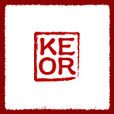
Summary: The indicator set: Things Audio 이것 this (thing) 그것 that (thing, ‘near you’) 저것 that (thing, ‘far from you and me’) The dependent noun ‘것’ means ‘a thing.’ A dependent noun is not a stand-alone noun and has to follow a noun modifier or a demonstrative as seen here. Study the table below to learn how 이것, 저것, and 그것each are combined with different particles and contracted. Note that the contracted forms are mostly used in a colloquial speech and the non-contracted form in formal writing: ‘ㅇ’ element ‘ㄱ’ element ‘ㅈ’ element No Particle 이것 --> 이거 그것 --> 그거 저것 --> 저거 Particle 이/가 이것이 --> 이게 그것이 -->그게 저것이 --> 저게 Particle 은/는 이것은 --> 이건 그것은 --> 그건 저것은 --> 저건 Particle 을/를 이것을 --> 이걸 그것을 --> 그걸 저것을 --> 저걸 Examples Ex 1> A: 어느 게 어려워요? B: 이게 어려워요. A: Which one is difficult? B: THIS (singling it out with the particle 이/가) is difficult. Ex 2> A: 그게 뭐예요? B: 이거요? iPod예요. A: 저건요? 그럼 저건 iPhone이에요? B: 아니오, 저것도 iPod예요. 저게 iPhone 이에요. A: What is that (the thing near Speaker B)? B: You mean this? It's an iPod. A: What about that (the thing distant from both Speaker A and B)? Then is that (the one distant from both Speaker A and B, on the other hand) an iPhone? B: No, that also is an iPod. THAT (another thing distant from both A and B, singling out the item with the particle 이/가,) is an iPhone.
